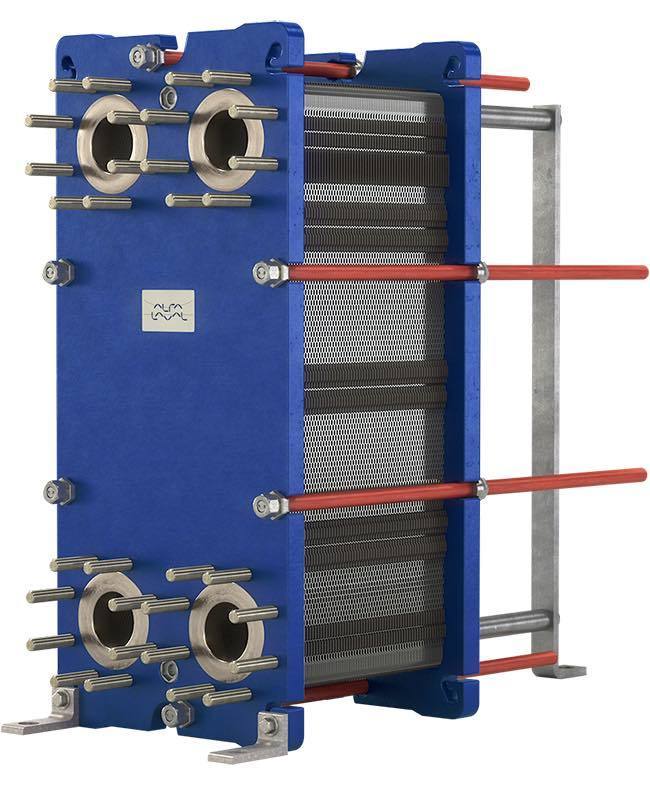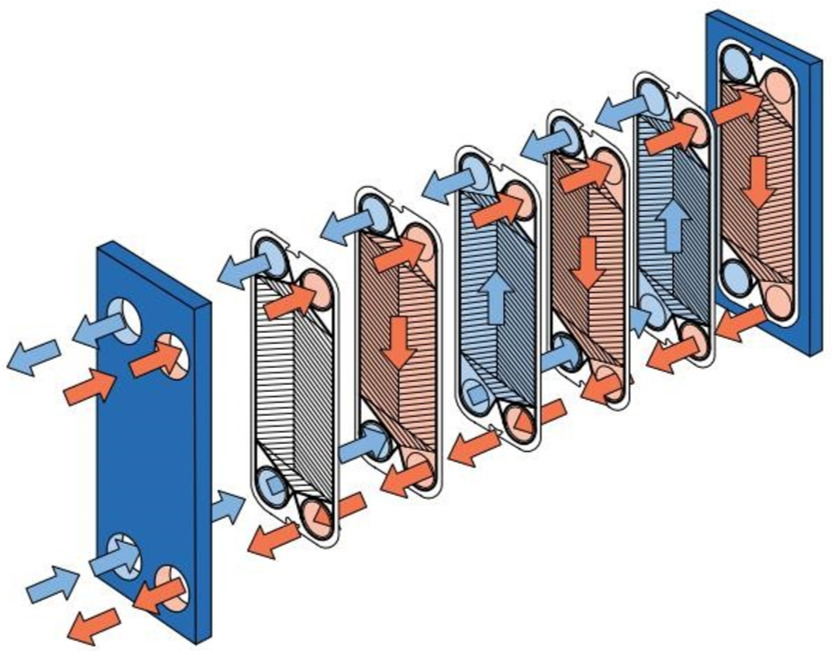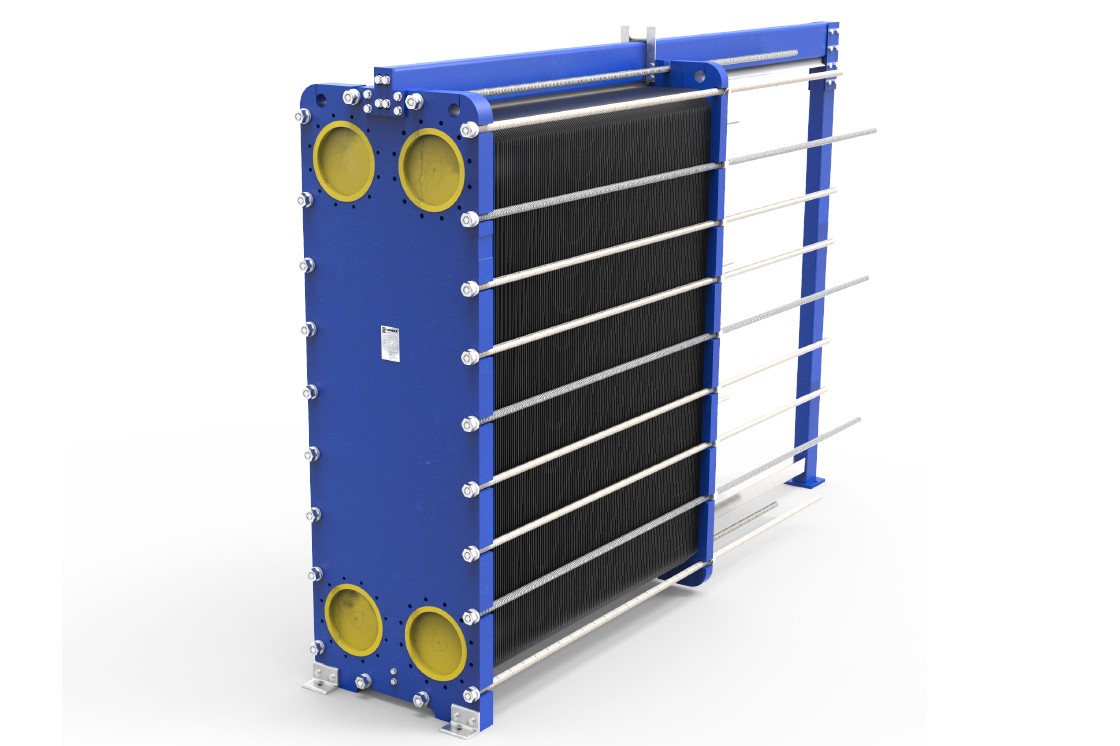Advantages and Disadvantages of Plate Heat Exchanger
The fluids may be separated by a solid wall to prevent mixing or they may be in direct contact. Plate Heat exchanger Flow Distribution.

All About Plate Heat Exchangers What You Need To Know
Advantages disadvantages of plate heat exchangers The double pipe heat exchanger is one of the easiest designs to fabricate add on to and repair thanks to its simple design.

. The term flat plate is slightly misleading in the sense that the surface may not be truly flat-it may be combination of flat grooved or of other shapes as the absorbing. Gasketed brazed welded and semi-welded. A counterflow unit has a higher effectiveness than a cross-flow unit of the same area although the simpler manifolding of the cross-flow unit may give it a price advantage which offsets its lower effectiveness.
Each of the three types of heat exchangers has advantages and disadvantages. Shell and tube type heat exchanger. The flat plat collectors is basically a heat exchanger which transfer the radiant energy of the incident sunlight to the sensible heat of a working fluid-liquid or air.
Pressure drop delta PΔP is less than a plate heat exchanger. Dimensionless group importance and advantages and disadvantages of dimensional analysis. They are widely used in space heating refrigeration air conditioning power stations chemical plants petrochemical plants.
Radiator in automobile c. This type is known as a 1-1 single-pass arrangement and is divided into two subsets. The hot and cold fluids alternate between each of the.
It falls on the perforated conical plate to turn into a large number of jets. A steam condenser is a closed vessel-type heat exchanger applied to convert low-pressure exhaust steam from the turbine to water. Counter flow and parallel flow.
Relatively simple design and easy to maintain. Heating water heating DHW heating drinking water heating separation exchanger biogas stations. Applications of plate type heat exchanger.
Heat recovery ventilation HRV also known as mechanical ventilation heat recovery MVHR is an energy recovery ventilation system which works between two sources at different temperatures. The falling jet of cooling water gets stuck in the trays from where it exits in the second series of jets and meets with the exhaust. The tube axis parallels to that of the.
Suitable for higher pressures and temperatures compared to plate heat exchangers. Shell and tube heat exchanger consists of a bundle of round tubes placed inside the cylindrical shell. Plate heat exchangers weigh less require less space and are more efficient compared to other heat exchanger designs of the same size.
The ground array which can be either a horizontal grid of pipes which should be 12m below ground level or two or three vertical boreholes which are likely to be more than 70m deepIn either case the extent of the ground array will be determined by the size of the heat pump and the soil conditions. Replacing and cleaning of the plates is a simple task because the plate stack can be opened easily. Heat exchangers have widespread industrial and domestic applications.
A heat exchanger is a heat transfer device that exchanges heat between two or more process fluids. We sell a very wide range of compact conventional heat exchangers at low pricesBrazed plate heat exchangers are extremely efficient for heat exchange. By recovering the residual heat in the exhaust gas the fresh air.
They have some unique advantages over some of the more complicated heat exchanger designs as well as some important disadvantages so this article will show buyers. As a waterwater exchanger ie. There are numerous advantages associated with plate heat exchangers.
The central component of the system is the heat exchanger. The simplest type of plate heat exchanger arrangement is that in which both fluids have only one passage so no change occurs in the direction of the fluid flows. Plate Heat Exchanger Advantages.
A heat exchanger to preheat oil for a furnace was designed without. A plate type heat exchanger as illustrated in Figure 2 consists of plates instead of tubes to separate the hot and cold fluids. Plate type heat exchanger diagram.
SWEP and Alfa Laval brazed plate heat exchangers. Milk chilling plants b. Advantages and Disadvantages of Shell and Tube Heat Exchangers.
The radiant heat transfer from a plate of 25 cm 2 area at 1250 K to a very cold enclosure is 50 W. A plate heat exchanger is a compact type of heat exchanger that uses a series of thin plates to transfer heat between two fluids. This section presents some of the main advantages and disadvantages of a PHE compared to shell-and-tube heat exchangers.
In either case flat plate construction is the simplest and most compact. There are four main types of PHE. There are two main elements to a ground source heat pump system.
But of the three. A heat exchanger is a system used to transfer heat between a source and a working fluidHeat exchangers are used in both cooling and heating processes. Cheap compared to plate heat exchangers.
Heat recovery is a method which is used to reduce the heating and cooling demands of buildings.

Plate Heat Exchanger Theory Phe Structure And Functional Description Heat Exchanger Heat Sugar Industry

Spiral Wound Universal Pressure Boiler Swup Boiler Coal Fired Power Plant Steam Boiler

All About Plate Heat Exchangers What You Need To Know

Advantages And Disadvantages Of A Plate Heat Exchanger Stoll

Type Of Refrigerant Compressor Reciprocating Compressor Centrifugal Compressor Compressor

0 Response to "Advantages and Disadvantages of Plate Heat Exchanger"
Post a Comment